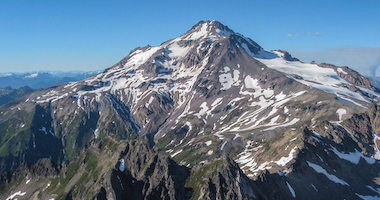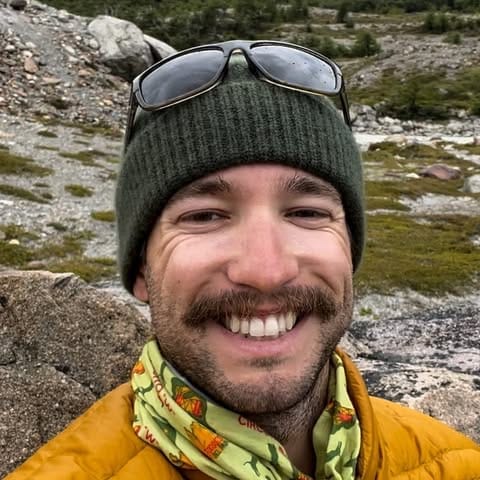When you watch an elite runner cross a marathon finish line, you’ll likely see them point to their cheering squad, coach, or training partners. After a climber achieves a major first ascent, they’ll thank the mentors, rope teams, and supporters who made it possible. Few athletes achieve peak performance alone. In the world of mountaineering, community can be an especially potent catalyst. Yet for many of us—whether due to our location, irregular schedules, or not knowing other like-minded climbers—our training can feel solitary.
In this article, we’ll explore why community matters so much, how to build an effective training community (even if you live far from the mountains), and practical steps you can take to leverage collective motivation. Drawing on sports psychology, coaching best practices, and real-world testimonials, we’ll show how a supportive network can turbocharge your fitness journey for that next summit or glacier climb.
Why a Training Community Matters
The Power of Collective Motivation
Research in sports psychology emphasizes how social support can elevate both consistency and intensity in training (Rees & Freeman, 2009). When you have friends or teammates committed to similar goals, you’re more likely to:
- Stick to Your Plan: Accountability becomes natural when other people notice if you skip a session.
- Push Harder: A partner or coach can encourage you to do “just one more rep” or hike another lap up a local hill.
- Share Knowledge: From gear hacks to altitude tips, exchanging lessons learned fosters faster improvement.
The Emotional and Psychological Boost
Mountaineering is mentally challenging: uncertain weather, long summit days, and the inherent risks of high-altitude environments demand resilience. A supportive community helps you process setbacks, maintain confidence, and celebrate milestones. Studies show that athletes who feel socially connected report higher self-efficacy and lower burnout rates (Smith et al., 2019).
Real-World Example
Think of your favorite climbing icon—Chad Kellogg, Sasha DiGiulian, Hilaree Nelson, or Reinhold Messner. Nearly all have credited mentors, coaches, or local clubs that shaped their early development. Even “solo” ascents come after hundreds of hours training in a social context, gleaning feedback and motivation from peers.
Overcoming Barriers to Building Your Community
Geographic Limitations
Living far from the mountains doesn’t mean you can’t find climbers or endurance athletes nearby. Often, local running, cycling, or gym communities are filled with potential training partners who share an interest in challenging pursuits. What matters is forging connections around similar intensities of effort and shared accountability (RMI Newsletter excerpt).
Scheduling Conflicts
- Different Work Hours: If you only have time to train at 5:00 a.m. or 9:00 p.m., find an online group to compare workouts and exchange notes, or see if a local group has “off-peak” sessions.
- Family & Life Obligations: Consider forming or joining a group that meets your unique schedule—perhaps a 30-minute lunch run club at your workplace or a weekend hiking meet-up with other parents.
Fear of Judgment or Comparison
Some climbers worry they’ll be judged if they post “modest” workouts or haven’t summited a 14,000-foot peak yet. In reality, seeing everyone’s incremental progress can be a source of inspiration and empathy. Positive, supportive cultures encourage each participant, regardless of level (Carron & Eys, 2012).
“For some, it may be intimidating to post their workout in an open environment like this, but realize that inspiration from your workout may be just what someone else needs.” — RMI Newsletter excerpt
Online Platforms: Creating a Virtual Basecamp
When distance or scheduling keeps you isolated, digital communities bridge the gap. The RMI Expeditions Strava Club is one example, but there are many platforms to explore:
- Strava
- Key Feature: Activity tracking, route sharing, and segment comparisons.
- Mountaineering-Specific Benefit: See each other’s vertical gain, weighted pack distances, or backcountry ski tours for real-time motivation.
- Facebook Groups & Subreddits
- Key Feature: Discussion boards for training plans, gear talk, or expedition stories.
- Mountaineering-Specific Benefit: Great for Q&A on local rock gyms, altitude tips, or meeting potential partners for multi-pitch weekends.
- WhatsApp or Discord
- Key Feature: Small, chat-based groups for day-to-day check-ins.
- Mountaineering-Specific Benefit: Real-time encouragement and quick voice notes about your last training session or approach plans.
Post a weekly goal every Monday—e.g., “2,000 vertical feet by Friday”—and report your progress daily.
Share photos or short videos from a treadmill incline workout or a local park hike to keep things authentic and engaging.
Building or Joining Local Groups
Start Where You Are
- Gyms and Climbing Walls: Chat with others who regularly boulder or top-rope. Many might be working toward the same big objectives and be open to forming a group.
- Outdoor Clubs: Look for hiking or mountaineering clubs affiliated with organizations like the American Alpine Club or the Sierra Club.
- Local Race or Charity Events: Endurance-based 10Ks, half marathons, or triathlons often attract adventure enthusiasts open to cross-training collaborations.
Host a “Training Meet-Up”
- Weekend Hike: Invite potential partners for a local trail day, even if it’s just a few miles.
- Stair Sessions: If you live in a flat area, gather folks at a stadium or tall building for weekly stair repeats.
- Pack Walks: Strap on a 30+ lb pack and walk around a local track or neighborhood—fellow participants can commiserate and push each other.
Positive and Constructive Communication
A key to sustaining any training group—online or in-person—is healthy dialogue. Make sure your community fosters:
- Encouragement Over Critique
- Offer supportive suggestions, but avoid a competitive or judgmental tone.
- Celebrate small victories (like an extra hour on the treadmill or nailing correct squat form) as much as big ones.
- Solution-Focused Feedback
- If someone complains about knee pain, propose exercises or gear adjustments that have worked for you, or suggest seeing a physical therapist.
- If you disagree with a training approach, share your perspective tactfully, referencing evidence or personal experience.
- Collaboration, Not Comparison
- Remember that every climber’s background, genetics, and daily responsibilities differ.
- Emphasize shared motivation: “If we all log a 10-mile hike this week, let’s reward ourselves with a group dinner!”
Example: The RMI Expeditions Strava Club
“…when we post back to the community, our effort can serve as someone else’s motivation, and as a group, we all train harder, smarter, better.” — RMI Newsletter excerpt
The success of such a club lies in members sharing everything from easy recovery walks to intense mountain runs, giving kudos, and exchanging training tips—keeping the atmosphere constructive and positive.

Leveraging Coaching and Mentorship
Even if you can’t hire a full-time mountaineering coach, you can seek out mentors or experts within your community:
- Local Guides or Experienced Climbers: Some might offer group courses or occasional training tips.
- Certifications and Workshops: Check if your local gym or an online platform hosts sessions about high-altitude physiology, nutrition, or advanced rope skills.
- Virtual Coaching: Many coaches now provide digital services, analyzing your workout data and offering customized plans.
One More Rep, One More Lap
Coaches and mentors often push you out of your comfort zone. From an extra set of squats to an extended loop on the treadmill, structured feedback can yield significant performance gains (Vickers, 2007).
Sustaining Momentum and Navigating Setbacks
Celebrate Milestones
- Monthly Summits: If your group completes a shared challenge (e.g., 10,000 feet of vertical in a month), do a social event or a group meal.
- Mini-Competitions: Friendly competition—like who can log the most consistent training hours—can keep everyone engaged.
Support Through Injury or Plateau
- Encouraging Rest: A strong community reminds you to take rest days or rehab injuries properly, preventing long-term setbacks.
- Sharing Plateaus: If someone’s stuck, brainstorming new exercise routines or gear solutions can help them break through.
Adjust Goals as a Team
- Realistic Timelines: If a group member has an upcoming climb, align weekly or monthly goals to support them. Maybe everyone does a dedicated stair session to “join in” their prep.
- Seasonal Variation: Use winter to focus on strength or cross-country skiing if you have local access, and shift to more climbing-specific hikes in spring/summer.
Key Takeaways for Building Your Training Community
- You’re Stronger Together
- Accountability, motivation, and shared knowledge accelerate your growth more than solo sessions alone.
- Embrace Digital Tools
- Platforms like Strava, Facebook, and Discord connect you with others even if you live in different time zones or training schedules.
- Local Groups Provide Hands-On Support
- Look for climbing gyms, meet-ups, or fitness clubs. Even a handful of consistent partners can make a big difference.
- Stay Positive and Inclusive
- Everyone has off-days or personal limitations. Encouragement goes further than criticism.
- Adapt, Learn, and Evolve
- Keep your community dynamic. Celebrate successes, troubleshoot injuries, and shift goals together as needed.
Final Thoughts
A training community—be it physical or virtual—represents more than a collection of individuals logging miles or vertical gain. It’s an evolving ecosystem of support, learning, and shared triumph. For mountaineers especially, every ounce of synergy can translate to fewer bail-outs, stronger summits, and memorable experiences that outlast any single climb.
“We accomplish some amazing feats, and we also all go through dark days in our training when things don’t seem to be going right. Let’s let this community strengthen us.” — RMI Newsletter excerpt
So, whether you join the RMI Expeditions Strava Club, start a local hiking group, or simply coordinate treadmill sessions with a friend across the country, remember: you’re forging a network that can lift you up on days of doubt and celebrate with you on summit day. And in the often-isolating pursuit of mountaineering excellence, that kind of fellowship is worth its weight in gold.
References & Further Reading
- Carron, A. V., & Eys, M. A. (2012). Group Dynamics in Sport (4th ed.). Fitness Information Technology.
- Rees, T., & Freeman, P. (2009). Social support and performance in sports. The Sport Psychologist.
- Smith, R. E., Smoll, F. L., & Cumming, S. P. (2019). Effects of a motivational climate intervention for coaches on young athletes’ sport performance anxiety. Journal of Sport & Exercise Psychology.
- Vickers, J. N. (2007). Perception, Cognition, and Decision Training: The Quiet Eye in Action. Human Kinetics.

















